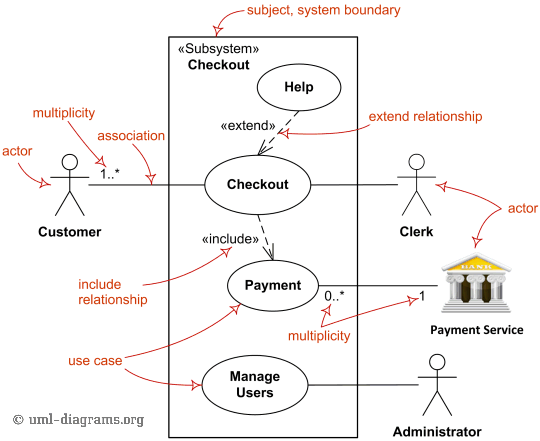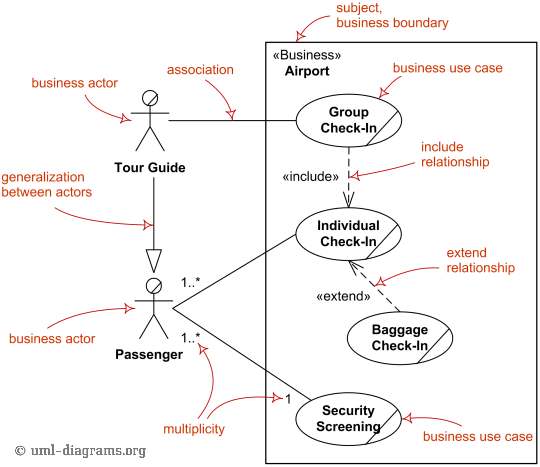

There are tabs for backbone cutover queries, inter-provincial cutover queries, and provincial cutover queries on the page.Īnalysis: It is easy to see that the cutover query and the different cutover subquery Tab are inherited, so generalization is used here. Requirement 1: Customers responding to users and international customer service can perform cutover notification queries. Now we extract some requirements as examples to explain.

The system has functional modules such as trouble ticket, business activation, resource verification, cutover, business re-insurance, network quality performance, etc. The include relationship is represented by a dotted line with an arrow in the use case diagram (labeled > on the line), and the arrow points from the base use case to the sub use case. Because the sub-use cases are extracted, The base use case is not a complete use case, so the base use case in the include relationship must be used together with the sub use case to be complete, and the sub use case must also be executed. When two or more use cases share the same set of actions, then the same set of actions can be extracted as an independent sub-use case for multiple base use cases to share. Include: include is the include relationship.

The extend relationship is represented by a dashed line with an arrow in the use case diagram (labeled > on the line), and the arrow points from the sub-use case to the base use case. There will be an extension point in the base use case of extend, and the sub-use case will be executed only when the extension point is activated. A complete function can be completed even without the participation of sub-use cases. The base use case is a complete use case. Įxtend: The extend relationship is an extension of the base use case. The generalization relationship is represented by a hollow arrow in the use case diagram, and the direction of the arrow is from the sub-use case to the base use case.

The sub-use case will inherit all the behaviors, relationships and communication relationships of the base use case, which means that any base use case can be replaced by a sub-use case. Generalization: The generalization relationship is a kind of inheritance relationship. The four basic components of a use case diagram: Actor, Use Case, Relationship and System. The main function of the use case diagram is to obtain requirements and guide testing. Use Case Diagram: Use Case Diagram shows who are related users, what services the user wants the system to provide (use cases), and the relationship diagram between use cases. Among them, include and extend are the most confusing. The relationship between use cases includes generalization, extend, and include. When drawing a use case diagram, it is important to clarify the relationship between use cases.


 0 kommentar(er)
0 kommentar(er)
